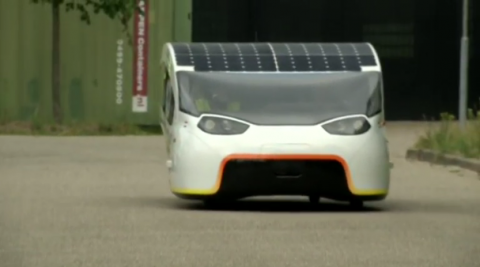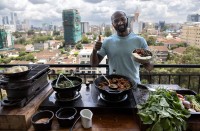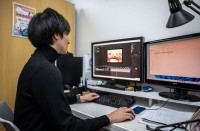
EINDHOVEN, Netherlands (Reuters) — A student solar racing car team says its newly-created five-seater model has two purposes – to win the Eindhoven University of Technology (TU/e) its third successive Bridgestone World Solar Challenge (WSC) and to make sun-powered vehicles sexy.
Solar Team Eindhoven’s Stella Vie has fewer solar panels than its previous four-seater models – Stella and Stella Lux – but spokesperson Beatrix Bos insists this is no problem.
“Even though we have one square meter less solar panels and we can’t produce as much energy, we still are more efficient, so we still can drive the same range,” she told Reuters.
The 375 kilogram (827 lbs) car is designed to travel for 1,000 kilometers (621 miles) on a Dutch summer day on a single charge.
“There are two in-wheel motors in the front wheels which mean we can drive 130 kilometers an hour,” said Bos.
Stella Vie also has a curved roof.
“In our former cars we had a flat roof. The curved roof is better for aerodynamics. It’s not only aesthetically and technically better,” she said.
Software engineer Daan Roordink is in charge of the logistics of getting the 5-meter (16.4 ft) long and 1.65-meter (5.4 ft) wide car to Australia for the race through the Australian outback.
According to Roordink, “we are using a smaller battery but still manage to get the same range. On a sunny summer day in the Netherlands we have a range of 650 miles on the battery, which is about 12 kilowatt hours. By comparison some Tesla models have a 100 kilowatt hour battery.”
The team has developed a parking navigation system that takes account of the position of the sun.
“Its special solar navigation not only takes into account the shortest route like a normal navigation system will do, but also weather forecasts to calculate the most efficient route,” said Roordink.
He added: “You want to park your car in the sun because it can charge your battery. But if you park for a couple of hours your car might be in the shadows. So we’re developing a system which helps the user find the optimal parking spot.”
The team of 23 students will defend its world title in the bi-annual, solar-powered WSC contest that runs 3,000 kilometers through the Australian outback, from October 8 to 15. Teams race from Darwin to Adelaide in three classes: Challenger, Cruiser and Adventure. Solar Team Eindhoven will compete in the Cruiser Class for practical cars. Tournament criteria include technical innovation, battery consumption and number of occupants.







